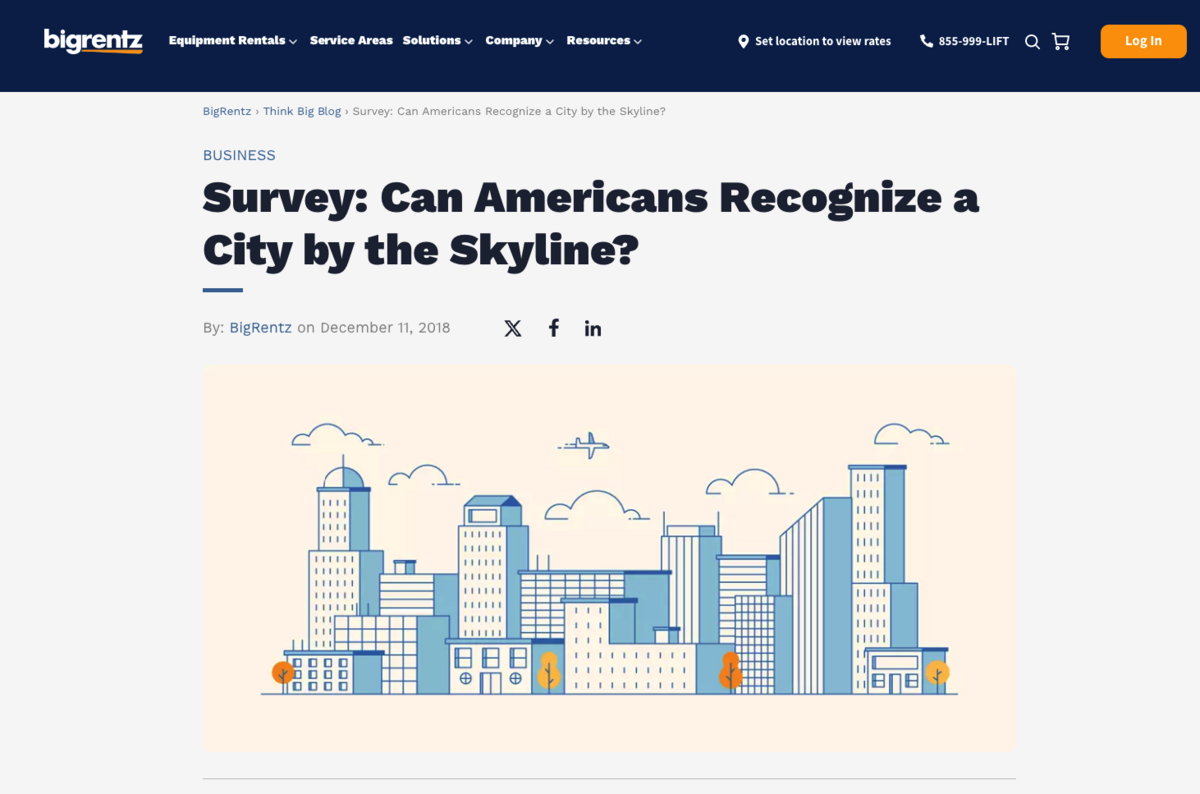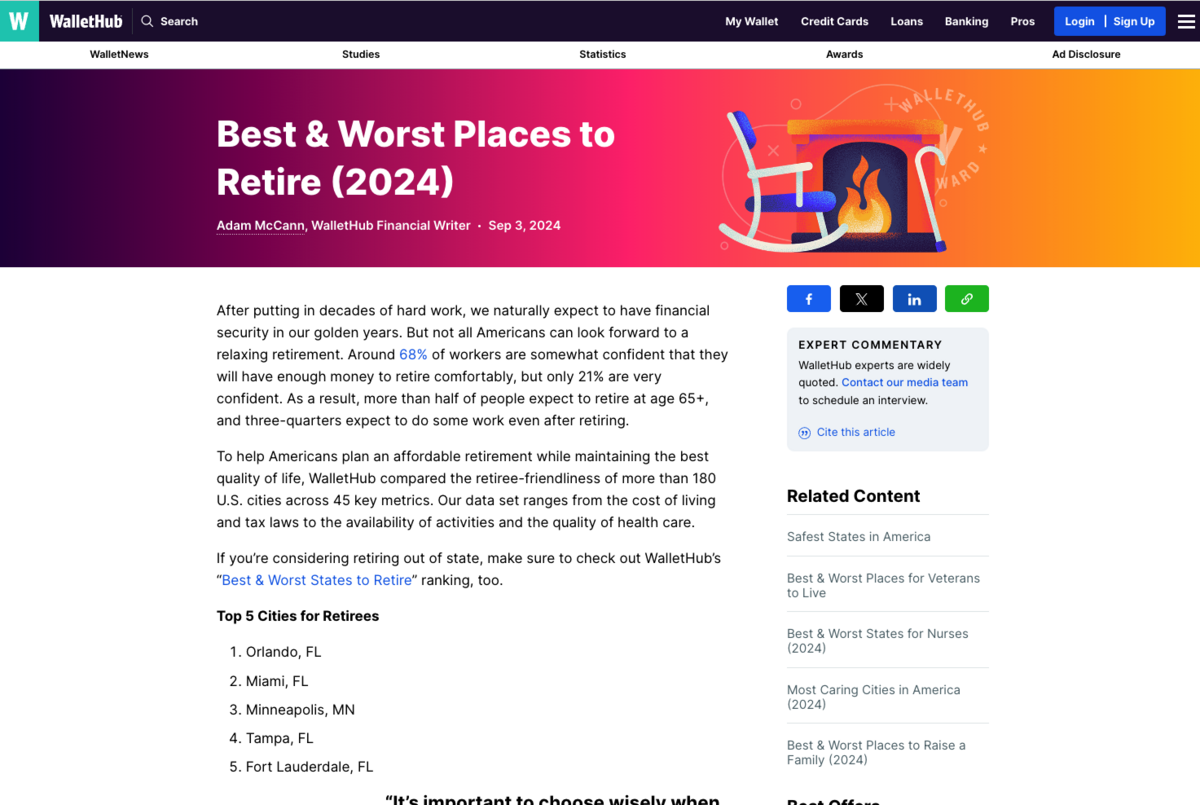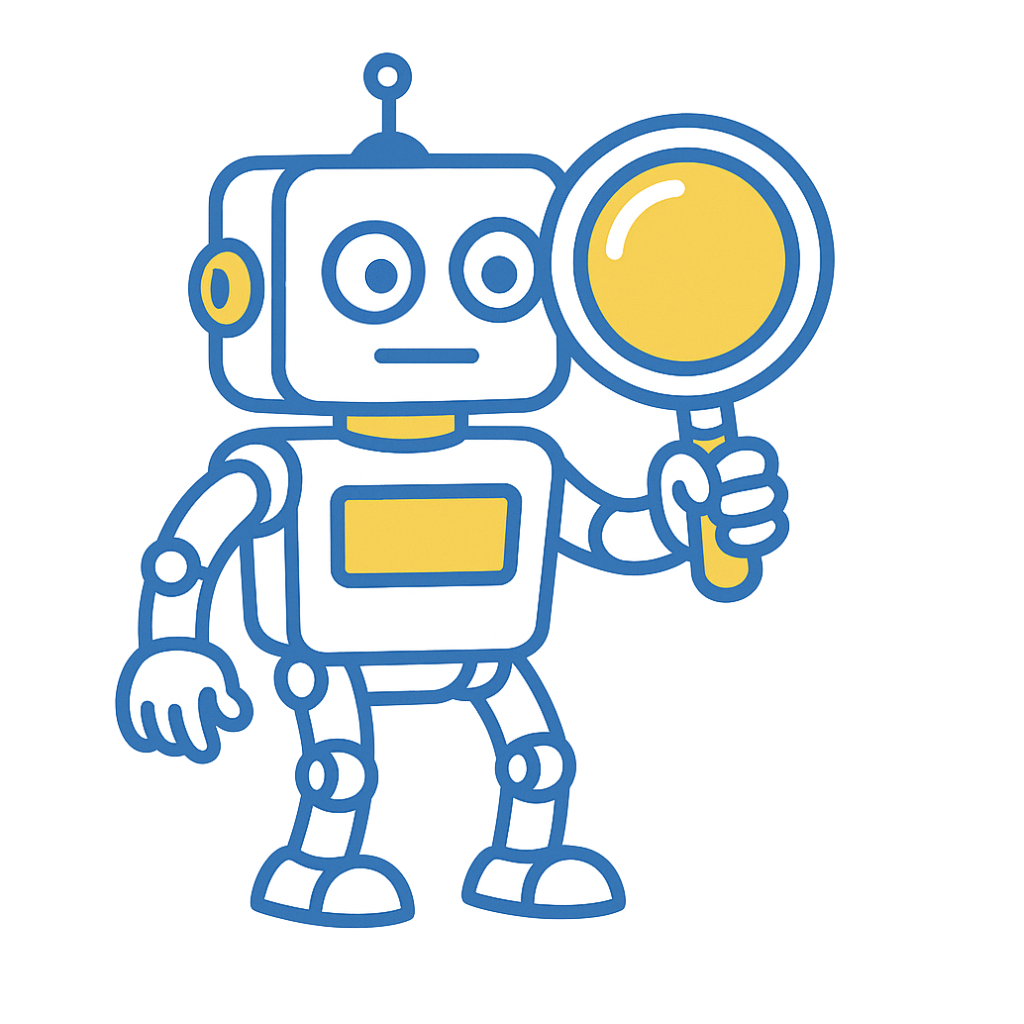Table of Contents
- Digital PR typically prioritizes SEO metrics like backlinks and traffic, while traditional PR emphasizes brand visibility and audience sentiment.
- Journalists primarily create stories for digital platforms, making digital-first PR strategies increasingly essential.
- Effective digital PR borrows from traditional methods, like building journalist relationships, pre-pitching ideas, and personalizing outreach.
- Cross-team collaboration between digital and traditional PR avoids overlap, improves campaign efficiency, and aligns on brand goals.
- Google’s emphasis on brand authority means integrating SEO with PR is critical for long-term success across both mediums.
According to the Muck Rack’s State of Journalism 2024 report, almost three-quarters of all stories are produced for the digital medium.

This shouldn’t come as a surprise to anyone in the industry.
Because of this, most brands are adopting the digital PR playbook to help boost their online presence, rankings, and overall brand awareness.
Yet digital PRs can learn plenty from traditional PR.
So, in this piece, we’ll explore the perceived differences between digital vs. traditional PR and how (and why) they should work together.
What is Digital PR?
Our post explains that digital PR is “a marketing tactic used to earn high authority backlinks from online publications that drive rankings and site traffic.”
Digital PR occurs online, through pitching stories or content via email to journalists at news publications.
Think data studies (like our digital PR statistics), press releases, and expert commentary.
Although digital PR can yield TV, radio, and print coverage, it is mainly concerned with digital coverage.
Next, let’s look at traditional PR.
What is Traditional PR?
Traditional PR builds and maintains an organization’s image in offline (aka “traditional”) media coverage, including TV, radio, newspapers, and magazines.
Campaigns can range from live events to billboard ads.
Traditional PR is more expensive to maintain simply because it covers much more ground.
With those definitions set, let’s get into the key differences.
Differences Between Digital and Traditional PR
In a macro view, the key differences lie in the audience, the goals, and the costs. But a few others go into it as well, like the tactics and relationships with journalists.
Let’s break down the differences.
1. Costs
In short, digital PR typically has a lower cost than traditional PR campaigns.
Based on our research, the average monthly contract size for digital PRs is $5,000-$10,000.
Tom Hemingway, Senior PR Strategist at Ride Shotgun echoed a similar cost consideration:
A purely SEO-focused approach for a digital PR agency might cost a client anywhere between £4,000 and £20,000 a month, depending on the activities involved.
However, the average monthly cost to hire a traditional PR firm ranges between $10,000 (based on Clutch data) and $14,500 (based on Avaansmedia).

Why the difference?
Ultimately, it varies depending on the tactics and goals.
For instance, Tom added,
“Traditional PR agencies can charge higher monthly fees, depending on the brand’s desired objectives.
They often need to collaborate with other departments or hire freelancers to support tasks such as research, creative, strategy, and production. Multiple client stakeholders are often involved as well.
This is why monthly retainer fees tend to be higher—to cover the multiple layers of activity required to develop and execute campaigns across various formats and touchpoints.”
And if you have a more prominent brand doing multiple, larger scale campaigns, these costs add up.
“A big brand couldn’t expect to move the needle with a smaller budget.
They could expect to pay more because they’re starting from an established position and defending against big spending competitors).
In contrast, smaller brands can expect to see some results with a smaller budget.”
Next, let’s get into the audience.
2. Audience
Because digital PR campaigns are mainly featured online, the audience skews towards those using digital platforms.
Similarly, the audience is more offline since traditional PR campaigns are used in places like radio, print, or billboards.
However, secondary audiences tend to overlap. For instance, it’s very common for digital PR campaigns to get mentions offline and traditional campaigns to get mentions online.
For example, the digital PR expert behind The Digital PR Newsletter, Mark Rofe, once took out a billboard in the UK to find a date.
This was then picked up and featured online on sites like the BBC.

On the other hand, I’ve had digital PR campaigns like this one on city skylines start online:

And then get featured on television news segments:

Next, let’s look at KPIs and goals.
3. KPIs and Goals
Digital PR is primarily concerned with metrics like the number of authority backlinks and organic traffic gains, while traditional PR examines metrics like reach, share of voice, and sentiment analysis.
Of course, every marketing action hopes to lead to conversions and sales, but at their core, the direct goals for digital PR are typically SEO-driven, while traditional is brand-driven.
I spoke with Georgia Gadsby March, the co-founder and PR director of UK-based digital PR agency, Unearth PR.
She has a traditional PR background but now owns a digital PR agency. Here’s how she put it in our podcast discussion:
I would say traditional PR is very much about brand building and maintaining a positive reputation.
So it’s all about brand credibility and building brand awareness. And I would say there’s also a vanity aspect in traditional PR as well—like what publications will make our client look great?
So it’s very much about audience or customer perception. Whereas digital PR is more into the data and the bottom line.”
With that in mind, let’s examine how these KPIs and Goals are realized using different tactics.
4. Tactics and Campaigns
Although many digital PR tactics have emerged from traditional PR, the two have distinct approaches.
One typical and effective style of digital PR is data-led content because journalists are always looking for fresh information.
For example, WalletHub publishes articles like “The Best Cities to Retire” annually. They analyze and rank cities based on several factors.

Once created, WalletHub (or an agency) pitches the story to news publications in the cities featured in the article via email outreach.
This gains them high-quality backlinks and brand exposure from major outlets, as you see below:

(You can read more about the city study technique.)
Compare this to traditional PR tactics like product releases or in-person events.
For instance, Burger King announced they are selling an Advent calendar:

Or Krispy Kreme’s announcement of free donuts on Election Day (to celebrate “doughmocracy,” of course!)

Since I found both of the above campaigns from Thea Chippendale’s PR Insider Newsletter, I asked her for her take:
“Both approaches are powerful in their own ways, but digital PR extends its impact by building lasting online visibility and authority, fueling organic growth over time.
When executed effectively, digital PR doesn’t just match the impact of traditional PR – it combines the strengths of both approaches in ways that traditional PR alone can’t replicate.”
In the next section, let’s look at how these tactics and campaign types influence journalist relationships.
5. Journalist Communication
There is also a difference between how digital PR and traditional PR interact with journalists.
When I talked to digital PR Manager Holly Scott of digital marketing agency Distinctly, she thought that “one of the main differences between traditional and digital PR is journalist involvement and communication earlier in a campaign’s lifecycle at a traditional PR agency.
Traditional PR specialists will begin communications with journalists in parallel with the planning stage of their client’s campaign.
As Digital PRs, relationship building is part of what we do, but it usually takes place closer to the outreach stage.
Also, the journalists we will have in mind to promote a campaign to will be targeted for the campaign only.
There isn’t as much frequent, back-and-forth communication with regard to keeping a journalist up to date with internal news from the client.”
I’ll return to this because there are a few major benefits to starting a campaign with journalists in mind and building relationships that way.
Last, let’s examine how different digital and traditional PR teams communicate internally.
6. Internal Communication
Based on our research, digital PR and traditional PR teams rarely interact.
Our State of Digital PR study found that only a small percentage (14.5%) of the digital PR teams work closely with the PR teams.

Most digital PRs (50.9%) work closely with the SEO teams. This was somewhat echoed in our podcast conversation with digital PR expert, Will Hobson of Rise at Seven.
“I think we’re at an early stage in the US where it’s a cross between link building and digital PR.”
Compare this to traditional PR, which can touch everything from marketing to sales to legal.
To recap, the head-to-head differences look something like this:

Even with these differences, the two teams can (and should) learn from one another in many ways.
How To Merge Digital and Traditional PR
With everything we know about traditional PR, many tactics have spilled over into digital PR. However, there are some key areas where I think we can still improve.
1. Introduce Yourself to Journalists
Many digital PRs see journalists as vehicles for links, so they don’t invest much time in relationships.
But this is a missed opportunity. With traditional PR, relationships are everything.
Digital PR expert, Jaclyn Lambert, of Jaclyn PR mentioned this in our podcast.
“Why not do the intro early and get your name out there first?
Then, when you’re down to pitching the actual content, they might already recognize your name.”
Treat online relationships like you would real-life relationships. You typically aren’t going to ask a total stranger for help with something. You’d want to get to know them first.
In our study of PR trends, you’ll see that building relationships is critical to cutting through the noise.
2. Get Personal
In February 2024, Google published its new email guidelines to combat spam. They focused on “bulk senders” who sent over 5,000 emails to personal email addresses within a 24-hour period.
This drastically impacts those PRs utilizing mass emailing techniques to less targeted media lists.
In most cases, failing to adhere to the new guidelines will result in your email being marked as Spam, hurting your email sender’s reputation.
So, by focusing more on building relationships and sending targeted, personalized emails, you can avoid getting marked as spam.
3. Get Journalists Involved at the Ideation Stage
Traditional PRs typically involve journalists earlier in their campaigns.
This isn’t always as easy with digital PRs.
Holly Scott of Distinctly discussed how digital PRs typically have shorter lead times for bigger campaigns.
So, what’s the fix?
She told me, “Bringing journalists in earlier, around the data analysis stage, will help them consider where the story fits best in their upcoming news schedule. In doing this will help forge more natural relationships and open the door to more opportunities in the future.”
Consider pre-pitching your ideas to journalists. This is something traditional teams do often. I was speaking with the VP of Public Relations of Agital, Brian O’Malley, who said:
“We will work with journalists we have great relationships with to float ideas and go back and forth on what angle might work best for them at a particular time.
This of course, only happens when that contact has immense trust in that you will deliver on what is promised to keep it highly editorial, but still secure meaningful placements for our clients.”
This can be as easy as an email that looks like this:
Hi [First Name],
We are brainstorming an idea for our client/site in the X industry. Since you just published SIMILAR STORY, I wanted to see if you’d be interested in this idea.
IDEA
If this sounds like something you’d like a first look at or think it could tie into future coverage, I’d love to share more details before it goes live!
Thanks!
Journalists are amazing at giving feedback because they know the stories that resonate with their audience.
4. Maintain Relationships with Journalists
You’re probably noticing a trend at this point.
Britt Klontz mentioned maintaining relationships via our podcast episode.
“If you can go out of your way and build that relationship in a personal or more friendly way and show that you’re reading your work, you can do that on social media, too.
It doesn’t have to be an email. You could just go out of your way to share their stories. Journalists love that. Journalists take note of that.
I think that’s the biggest compliment you could give to a journalist.”
It may be as simple as keeping track of their social posts. And it doesn’t have to be every single journalist.
Target the top, most influential ones in your niche.
I use BuzzStream to track and build relationships with journalists. Every website shows contact history:

In this last section, I want to address the common problem that most teams face: internal communication.
How Digital PRs and Traditional PRs Can Work Better Together
As we showed earlier on, digital PRs and traditional PRs teams rarely seem to communicate with each other.
Even though there is so much to learn from one another, Amy Irvine, Digital PR Director of Digitaloft told me there is still a big gap between the digital PR and traditional PR teams.
She said, “One of the biggest failures I see across big companies is traditional PRs and digital PRs working in completely different silos and having no communication or understanding about what the other one is trying to achieve.
You need to ensure your traditional PR team and digital PR team are working together, as this will drive the most success for your brand.”
So, with that in mind, here are some ways these teams can work better together. (The quotes are from Amy.)
Collaborate Early
The earlier you can get your teams together for a campaign, the less overlap you have. And the less overlap, the less friction.
“By sharing your activity, you can easily prevent crossover and cultivate a culture of collaboration.
Digital PRs can support traditional PRs to ensure that their campaigns are working not just from a PR and brand perspective but also from organic search.
You can also ensure that you aren’t jumping on the same stories and avoid cannibalisation.”
Amy recommended communicating the “Why” of digital PR. The more you can agree on goals and objectives, the better.
Feel free to send them to our resource on digital PR.
Share Outreach Lists
When I started working with a client while with Siege Media, we would ask the PR team for a list of contacts so that we weren’t souring existing relationships. The same should apply for the traditional PR team.
“Digital PRs are often blocked by big internal traditional PR teams, which prevent them from contacting publications, usually the highest-authority publications, such as nationals.
If you have a big campaign planned, let the other team know so they can hold off on outreaching to the same contacts while you launch it.”
Remember, in BuzzStream you can easily export outreach lists by clicking the “Export” dropdown.

Communicate Often
Once you have a campaign going, it’s important to keep the communication going.
“A lack of communication is often the biggest blocker between digital and traditional PRs. I recommend regular catch-ups between the two to ensure that everyone is on the same page and working together.
All PR Should Be About Building the Brand
As Google continues to push brands, digital PRs need to look past links and into the brand.
Don’t get me wrong. Links have immense power and will always be a ranking factor. But they are nothing if you have no brand to speak of.
Similarly, SEO is essential for a brand’s online presence. Traditional PRs also need to ensure that the sites they work with have sound SEO best practices.
Otherwise, their efforts will only exist offline. And as we know, most journalists are moving to digital.
It doesn’t matter what you call it, traditional or digital; if all teams are aligned in building a brand, you’ll have success in the future.

 End-to-end outreach workflow
End-to-end outreach workflow



 Check out the BuzzStream Podcast
Check out the BuzzStream Podcast







